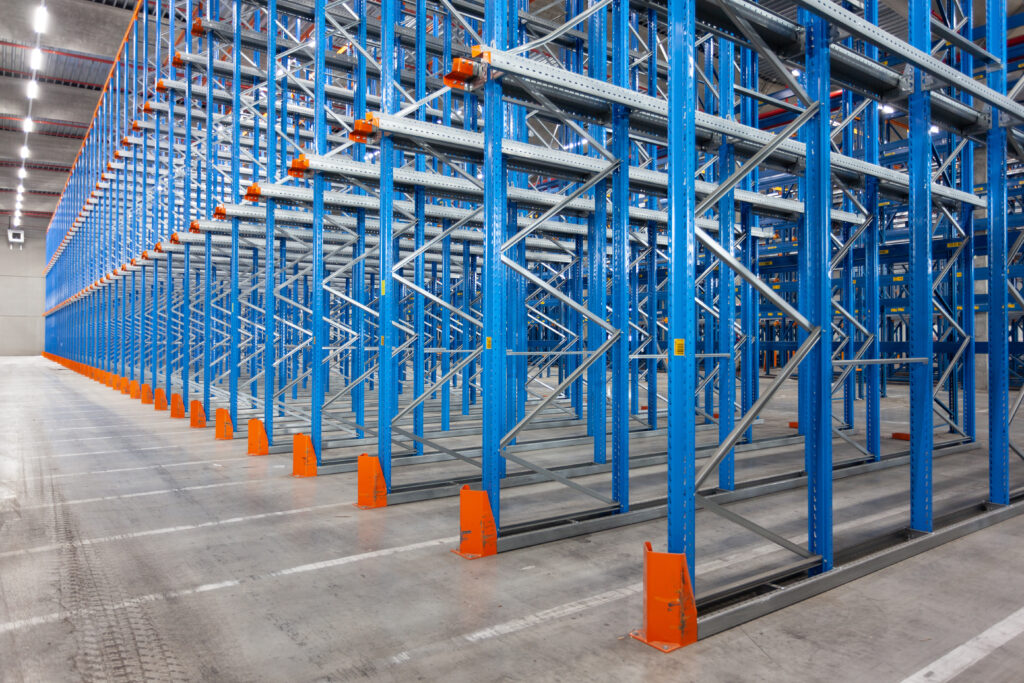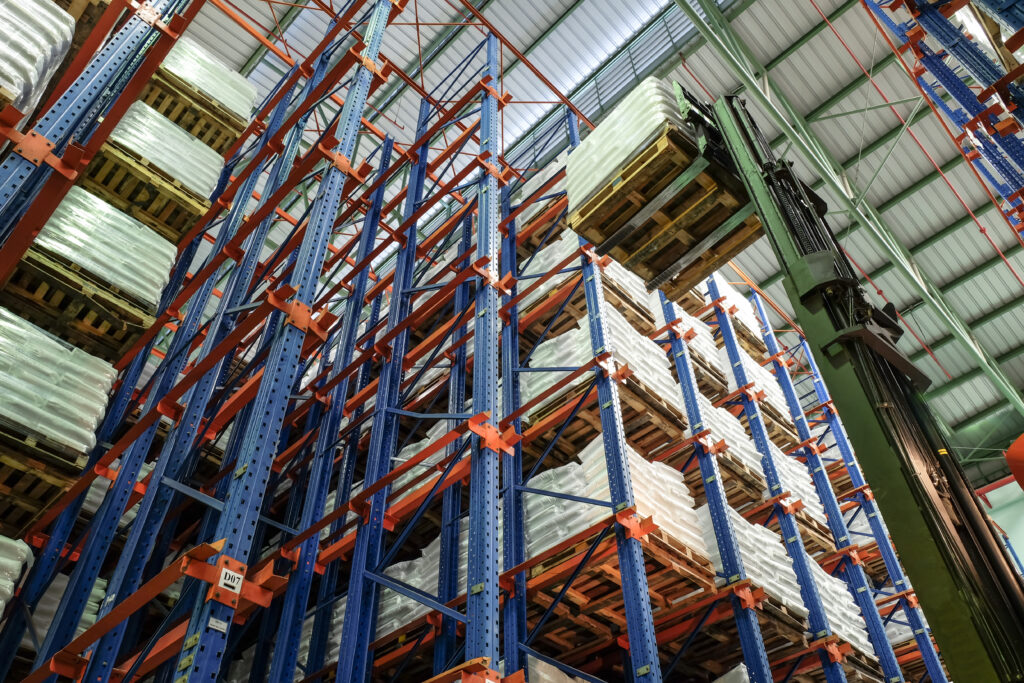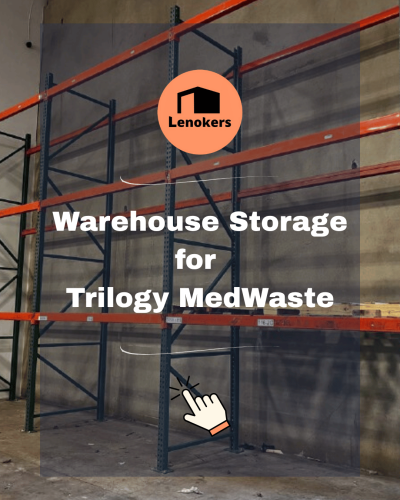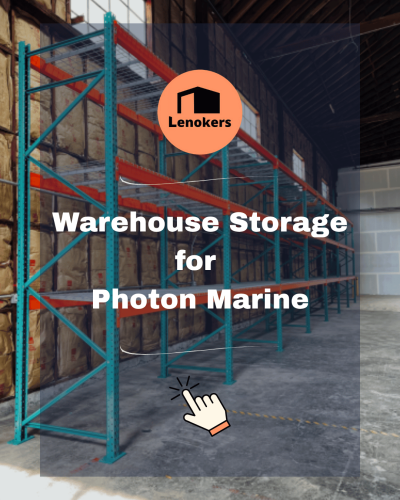One of the major time-wasting factors during warehouse operations is movement between aisles. Due to eliminating aisle space, the drive-in pallet rack system maximizes storage capacity.
To load or unload a pallet on the drive-in racks, the forklift operator enters the storage area to place or take pallets, commonly in a single point. This is the first-in (FIFO) or last-out (LIFO, principle, when the last pallet loaded into the channel will be unloaded first) inventory management principle. In any case, the operator should go off the rack after pallet placement the same way as entered. However, drive-in systems can also feature a double-entry design for greater density.
The drive-in pallet racks are also suitable for refrigerating and freezing warehouses. Finally, their cost is more affordable than alternatives (gravity, mobile, shuttle systems).
Drive-in racks features:
- Deep lane storage reduces space usage, cuts costs, and holds more loads thanks to eliminating multiple access aisles.
- Thus, unlike selective racks, drive-in pallet racks cannot provide access to any pallet at any given time. As a result, you have storage density instead of direct access.
- There are risks associated with deep racks, where the forklift or reach truck operator must constantly maneuver within the structure. For in-bay protection and vehicle guidance, there is a floor-mount guide angle or rack-mounted rub rails.
- They are available in roll-formed or structural channel steel
- The producer recommends up to ten deep per side
- Horizontal and vertical X-bracing supplied as needed per design requirements and local codes
We can go on explaining and listing the benefits of these racks, as Lenokers has been working and installing/dismantling them all over the world for decades. We know every tiny detail about them. Ask us; we are sure we can fulfill your requirements.



